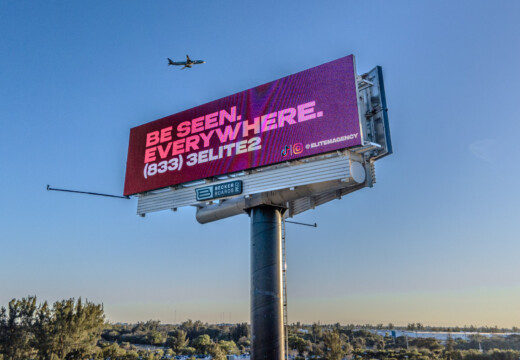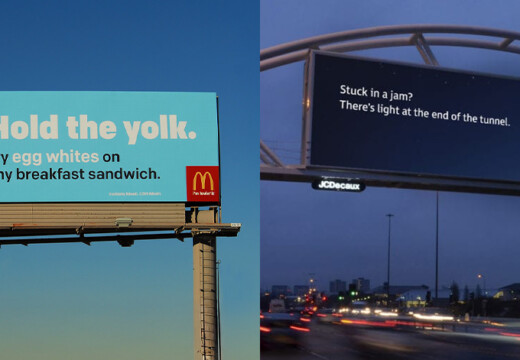Proximity ads use location-based targeting to display messages on digital billboards near your business or key areas. They help local businesses reach the right audience at the right time, driving traffic and boosting visibility. With platforms like Blip, you can start campaigns for as little as $20/day, select billboard locations based on data (like daily impressions and CPM), and adjust your ads in real-time.
Key Benefits:
- Local Targeting: Focus on specific geographic areas.
- Cost Control: Start small with flexible budgets.
- Real-Time Updates: Adapt campaigns instantly.
- High Visibility: Stand out with bold, public displays.
Quick Tips to Get Started:
- Choose Locations: Use data like impressions and traffic patterns to pick billboards.
- Set a Budget: Start small and adjust based on performance.
- Design Clear Ads: Use large fonts, high-contrast colors, and concise messages.
- Target Peak Times: Focus on commuter hours or local events.
- Track Results: Monitor impressions, CPM, and location performance to refine your strategy.
Proximity ads are a simple, effective way to connect with your community and grow your business. Start small, test, and scale based on what works.
GeoFencing and Proximity Marketing
Choosing Billboard Locations
Selecting the right billboard locations can make or break your advertising campaign. Blip’s interactive marketplace offers detailed metrics and tools to help you make informed decisions and get the most out of your investment.
Reading Location Data
To choose the best locations, you need to understand the performance metrics available through Blip’s platform. Each billboard comes with key data points that can guide your decisions:
| Metric | What It Tells You | Why It Matters |
|---|---|---|
| Daily Impressions | Number of potential viewers per day | Shows how many people could see your ad |
| Average CPM | Cost per thousand views | Helps estimate your return on investment |
| Peak Traffic Hours | Times with the most visibility | Helps you plan when your ad will be most effective |
Ray Bowens, Founder of Hashtag-Vape, highlights the cost-effectiveness of using Blip:
“Billboards are one of the most impactful ways to advertise, and with Blip, you spend a fraction of what you would end up paying elsewhere”.
Once you understand these metrics, the next step is to define the range for your campaign.
Setting Location Range
Your campaign’s range should align with your target audience and the nature of your business. Consider these factors when setting your range:
- Urban vs. Suburban: Denser, urban areas often require a smaller range, while suburban areas may need broader coverage.
- Drive Time: Think about local commuting patterns and how they affect visibility.
- Business Type: Tailor your range to fit your service area or delivery zones.
- Population Density: Take local demographics into account to ensure you’re reaching the right people.
Once your range is set, the focus shifts to finding prime locations within that area.
Picking Local Hotspots
To maximize visibility and engagement, prioritize billboard locations that align with your audience’s daily habits. Here are some key types of locations and their benefits:
| Location Type | Best For |
|---|---|
| Major Intersections | Building high-visibility brand awareness |
| Business Districts | Reaching professionals during the workweek |
| Shopping Centers | Engaging directly with consumers |
| Event Venues | Promoting time-sensitive offers |
Starting Your Campaign
Setting Up Location Targeting
Blip’s interactive marketplace makes it easy to pinpoint exactly where you want your ads to appear. Using the map interface, you can explore billboard locations and access real-time performance metrics to make informed decisions.
| Targeting Feature | Best Practice |
|---|---|
| Geographic Zones | Prioritize areas where your target audience is most concentrated |
| Traffic Patterns | Schedule ads to coincide with peak commuter times |
| Location Clusters | Focus on creating a strong presence near business hubs |
Once you’ve identified your key locations, the next step is to align your budget with these targeted areas.
Budget Planning
Blip’s pay-per-play system makes budgeting straightforward and flexible. You can start with as little as $20 per day and adjust your spending based on how your campaign performs.
To make the most of your budget, consider these tips:
- Set daily spending limits to maintain control.
- Increase bids during high-traffic periods to maximize visibility.
- Regularly analyze billboard performance and tweak your spending accordingly.
Fine-tuning your budget is just the beginning – timing and bid management can take your campaign to the next level.
Timing and Bid Management
Blip’s real-time bidding system updates every 10 minutes, giving you constant opportunities to optimize your campaign for both timing and cost. By focusing on key time blocks, you can ensure your ads appear when they’ll have the most impact.
Here’s how to approach different time slots:
| Time Block | Recommended Strategy |
|---|---|
| Morning Rush | Boost bids between 7–9 AM to catch commuters |
| Lunch Hours | Target 11 AM–2 PM for food and retail promotions |
| Evening Commute | Increase visibility from 4–7 PM as people head home |
| Weekend Peak | Adjust bids based on local events and activities |
Paul Willey, the owner of Mr. Charlie’s Chicken Fingers, highlights the value of Blip’s system:
“Working with Blip has given Mr. Charlie’s the momentum to get our new location on the map while accelerating growth for our original location”.
Kimberly Pinkson, owner of Pretty In Pinkston, also praises the platform’s impact:
“Blip works for us. It’s a different medium, and it brings a lot of exposure. It sets us apart from the rest of the [competition], and that’s what I like”.
Creating Your Ad Design
Design Requirements
To make your billboard ad stand out, stick to Blip’s design guidelines. These ensure your ad is clear, visible, and professional. Here’s a quick breakdown of what works best:
| Design Element | Best Practice | Why It Matters |
|---|---|---|
| Text | Use large, clear fonts | Makes your message easy to read, even from far away. |
| Color | High contrast colors | Keeps your ad visible in all lighting conditions. |
| Image Quality | High-resolution visuals | Ensures your graphics look sharp on big screens. |
| Message | Keep it concise | Helps viewers understand your ad quickly. |
“It’s not a social media thing that you see on your phone. It’s not word-of-mouth. It’s big and bold and out there in public. I would say this is the first step of looking big and public”.
Once your design is ready, focus on crafting a message that connects with your local audience.
Local Message Writing
Your ad will resonate more if it feels relevant to the community. Ray Bowens, Founder of Hashtag-Vape, explains:
“Billboards are one of the most impactful ways to advertise, and with Blip, you spend a fraction of what you would end up paying elsewhere”.
Here are a few ways to make your message hit home:
| Message Type | Example Application |
|---|---|
| Local Landmarks | “2 miles from Central Park” |
| Community Events | “See us at the County Fair” |
| Neighborhood References | “Your Downtown Coffee Shop” |
Limited-Time Offers
If you want to prompt quick action, highlight limited-time deals in your ad. These create urgency and encourage immediate responses.
For the best results, pair your offers with smart display strategies:
| Offer Type | Display Strategy |
|---|---|
| Flash Sales | Schedule ads during peak traffic hours. |
| Daily Specials | Rotate content to match different times of the day. |
| Event Promotions | Increase ad frequency as the event approaches. |
sbb-itb-2e2e93f
Measuring Results
Reading Campaign Data
To make the most of your proximity-based advertising efforts, you need to keep a close eye on your campaign metrics. Blip’s analytics dashboard offers real-time data to help you track performance. Pay attention to these key metrics:
| Metric | What to Track | Why It Matters |
|---|---|---|
| Impressions | Daily/weekly views | Shows how many people are seeing your ads. |
| Cost Per Play | Average display cost | Helps you manage and distribute your budget effectively. |
| Peak Hours | High-traffic periods | Pinpoints the best times for displaying your ads. |
| Location Performance | Billboard-specific data | Highlights which locations yield the best results. |
Testing Different Versions
Experimenting with different elements of your campaign can reveal what works best for your audience. Here’s what you can test:
| Test Element | What to Vary |
|---|---|
| Location Mix | Try different neighborhood combinations. |
| Display Times | Compare rush hour slots to off-peak times. |
| Message Variants | Test local references or different calls-to-action. |
Be sure to run each test long enough to gather meaningful data. Then, use the insights to refine your campaign strategy.
Making Campaign Updates
Once you’ve analyzed your test results, act on them quickly to keep improving your campaign. Here’s a guide for making updates based on performance data:
| Timing | Update Type | Purpose |
|---|---|---|
| Weekly | Budget reallocation | Focus spending on the most effective locations. |
| Monthly | Creative refreshes | Keep your ads fresh and engaging. |
| Seasonal | Location optimization | Adjust for seasonal shifts in traffic patterns. |
Regularly reviewing and tweaking your campaign ensures it stays impactful and aligned with your goals.
Next Steps
Now that you have your results, it’s time to fine-tune your strategy and take action to launch your campaign.
Key Points Review
Proximity-based advertising offers local businesses a powerful way to connect with their community. Here’s how it makes an impact:
| Key Benefit | Business Impact |
|---|---|
| High Visibility | Grab attention with bold, public displays that go beyond social media or word-of-mouth. |
| Local Growth | Create buzz for new locations and strengthen recognition for existing ones. |
| Cost Control | Start small – just $20/day – and only pay when your ad is displayed. |
With these advantages in mind, you’re ready to take the next step and launch your campaign.
Launch Your Campaign
Use your insights to plan your ad placements strategically, ensuring your budget and schedule align with your goals. Here’s a simple action plan to get started:
| Step | Action | Timeline |
|---|---|---|
| Location Selection | Choose nearby billboards through the interactive marketplace. | Day 1 |
| Design Upload | Upload your ad following the design guidelines. | Day 1–2 |
| Review Process | Allow time for moderation (about 90 minutes) and owner approval (1–3 days). | 1–3 days |
| Campaign Launch | Set your budget and schedule, then launch your campaign. | Day 4 |
FAQs
How do I choose the best billboard locations for my proximity ad campaign?
To find the ideal billboard spots for your proximity ad campaign, take advantage of Blip’s interactive marketplace. This handy tool lets you explore thousands of digital billboards across the U.S., using filters like impressions and cost per thousand views (CPM) to help you zero in on locations that match your audience and budget.
When choosing locations, think about where your target market is most likely to be. Look for billboards near busy highways, popular landmarks, or bustling areas with high foot traffic that align with your campaign’s goals. Blip also allows you to narrow your search by specific geographic areas, making it simple to connect with the local audience you’re aiming to reach.
How can I design effective ads for maximum visibility and engagement on digital billboards?
To craft ads that grab attention, stick to clear, straightforward designs that people can absorb in an instant. Opt for bold, high-contrast colors and large, legible fonts to make sure your message pops, even from far away.
Keep the text short and to the point – just a few powerful words or phrases that communicate your message fast. Add striking visuals or your logo to reinforce your brand, but steer clear of overcrowding the layout.
Since digital billboards are often seen for only a few seconds as viewers pass by, focus on simplicity and strong visuals to leave a memorable impression.
How can I track the performance of my proximity ad campaign using Blip’s analytics tools?
Track Your Proximity Ad Campaigns with Blip
Blip’s analytics dashboard simplifies the process of monitoring your proximity ad campaigns. It provides real-time data on critical metrics such as impressions, ad plays, and overall campaign performance. This means you can see exactly how well your ads are connecting with your audience as it happens.
Armed with these insights, you can fine-tune your campaign strategy – whether that means adjusting your location targeting, reallocating your budget, or making other strategic changes. Blip gives you the tools to make informed, data-driven decisions that can help you get the most out of your advertising efforts.
Related posts
- Why Hyper-Local Campaigns Work for Small Businesses
- How Digital Billboards Target Local Audiences
- How Digital Billboards Boost Local Engagement
To find the ideal billboard spots for your proximity ad campaign, take advantage of Blip's interactive marketplace. This handy tool lets you explore thousands of digital billboards across the U.S., using filters like impressions and cost per thousand views (CPM) to help you zero in on locations that match your audience and budget.
When choosing locations, think about where your target market is most likely to be. Look for billboards near busy highways, popular landmarks, or bustling areas with high foot traffic that align with your campaign's goals. Blip also allows you to narrow your search by specific geographic areas, making it simple to connect with the local audience you're aiming to reach.
"}},{"@type":"Question","name":"How can I design effective ads for maximum visibility and engagement on digital billboards?","acceptedAnswer":{"@type":"Answer","text":"
To craft ads that grab attention, stick to clear, straightforward designs that people can absorb in an instant. Opt for bold, high-contrast colors and large, legible fonts to make sure your message pops, even from far away.
Keep the text short and to the point - just a few powerful words or phrases that communicate your message fast. Add striking visuals or your logo to reinforce your brand, but steer clear of overcrowding the layout.
Since digital billboards are often seen for only a few seconds as viewers pass by, focus on simplicity and strong visuals to leave a memorable impression.
"}},{"@type":"Question","name":"How can I track the performance of my proximity ad campaign using Blip's analytics tools?","acceptedAnswer":{"@type":"Answer","text":"
Track Your Proximity Ad Campaigns with Blip
Blip's analytics dashboard simplifies the process of monitoring your proximity ad campaigns. It provides real-time data on critical metrics such as impressions, ad plays, and overall campaign performance. This means you can see exactly how well your ads are connecting with your audience as it happens.
Armed with these insights, you can fine-tune your campaign strategy - whether that means adjusting your location targeting, reallocating your budget, or making other strategic changes. Blip gives you the tools to make informed, data-driven decisions that can help you get the most out of your advertising efforts.
"}}]}


